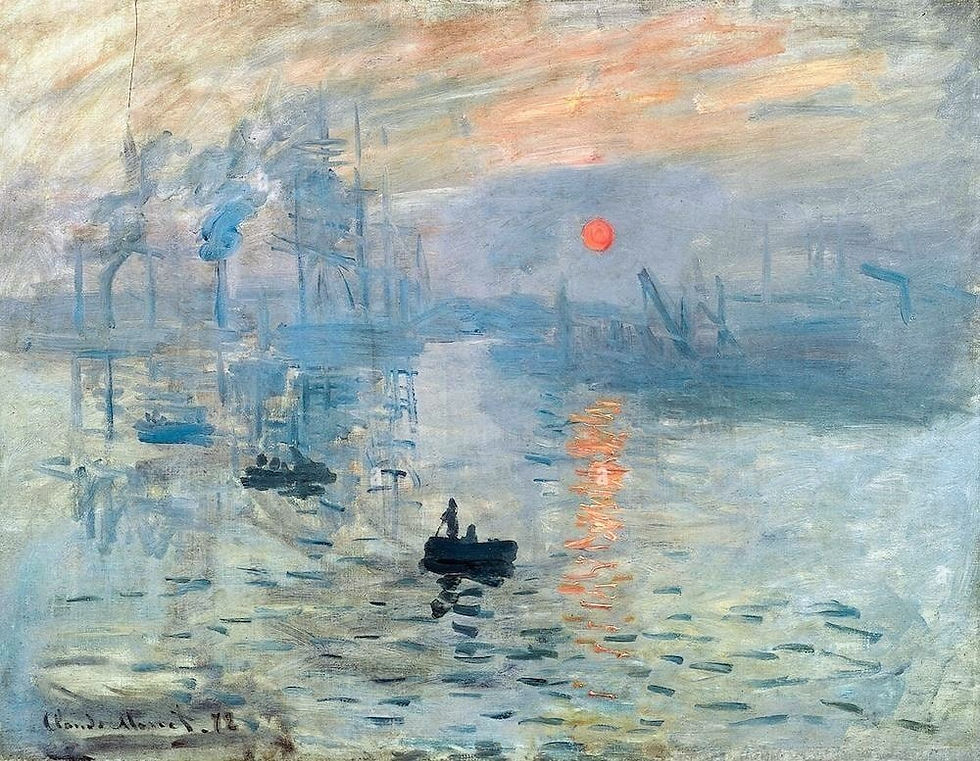The Dialogue Between Light and Shadows: Renoir and Kirchner
- Emily Cho '27

- Nov 3
- 2 min read
Updated: Nov 5
By Emily Cho ‘27 • Oct 24, 2025

A Sunday afternoon in Paris—sunlight filters through trees, laughter floats in the air, and Pierre-Auguste Renoir captures it all in Bal du moulin de la galette. Painted en plein air, his canvas gleams with movement and warmth: a swirl of color and life where every brushstroke flickers like music.
Half a world away in feeling, though not in time, stands Ernst Ludwig Kirchner’s Street, Dresden. Painted three decades later, it hums with dissonance—angular figures, acidic colors, and a sense of unease that clings to the crowded street. If Renoir painted the optimism of modern life, Kirchner revealed its nervous pulse.
At first glance, the two paintings could not be more different. Renoir’s world feels endless and open, a city breathing freely in light. Kirchner’s, on the other hand, feels trapped in its own geometry. Yet both artists, in their own way, tried to answer the same question: what does it mean to be alive in a changing world?
Renoir’s composition pulls the viewer into a dance of glances and gestures. No single figure dominates the scene; instead, the eye wanders through fragments of life—a child turning, a woman in a black dress leaning over, a man lighting a pipe beneath the dappled shade. The horizontal rhythm of the crowd meets the vertical line of a tree, creating a delicate architecture of light and laughter. Renoir’s Parisian crowd isn’t just a social scene—it’s a democratic one, where every figure matters, even those barely painted in the background.

Kirchner’s Street, Dresden offers the opposite sensation. His women in bright dresses don’t seem to move at all; they stare, almost confront the viewer. Their outlines are heavy and unyielding, and the shocking pink sidewalk pulls the ground out from under us. The scene feels tilted, tense. Even the color refuses to behave—orange faces, green hair, and neon outlines make human connection feel impossible. Kirchner’s city, unlike Renoir’s, is no longer a place of gathering; it is a crowd of isolation.
Color defines their worlds as much as form. Renoir’s palette—light yellows, pale blues, soft pinks—seems to breathe. Sunlight dances across hats, hair, and dresses, creating dapples that shimmer with joy. In contrast, Kirchner’s colors scream rather than sing. His pinks and greens collide, his blues bleed into orange. Where Renoir’s light suggests the possibility of happiness, Kirchner’s intensity makes us question if that happiness ever truly existed.
Renoir once said he wanted to paint “a world full of gaiety and sunlight.” Kirchner, painting decades later, lived in a time when such sunlight seemed almost cruel. His Expressionism replaced Impressionism’s fleeting moments of pleasure with something rawer—an emotional truth that couldn’t be softened by light.
Placed side by side, the two canvases become a conversation between joy and anxiety, between a city in bloom and a city under pressure. Renoir paints the heartbeat of a moment; Kirchner paints its aftermath.
Perhaps that is the essence of modern art itself—the understanding that beauty and discomfort often share the same frame. Renoir’s world invites us to join the dance. Kirchner’s asks us why we stopped dancing.







Comments